For over 100 years human remains recovered from the famous Bjerringhøj Viking Age burial in Denmark have been missing. But now, a collection of Viking bones and textiles that were recovered from “a misplaced box” in the National Museum of Denmark has been confirmed as belonging to the Bjerringhøj burial. And these are not just any Viking bones: they are a world-famous collection that is now even more complete.
The team of Danish researchers describe their latest work as “an archaeological detective story” and they demonstrate the importance of modern in-depth re-investigations of old finds, and the importance of “source-critical approaches” when dealing with museum collections.
In a new paper, lead author Charlotte Rimstad from the National Museum of Denmark in Copenhagen, presents new skeletal and comparative textile analyses, radiocarbon and date interpreting, revealing an entirely new layer of data pertaining to “Viking Age clothing,” including the news that Viking men wore “long trousers”.
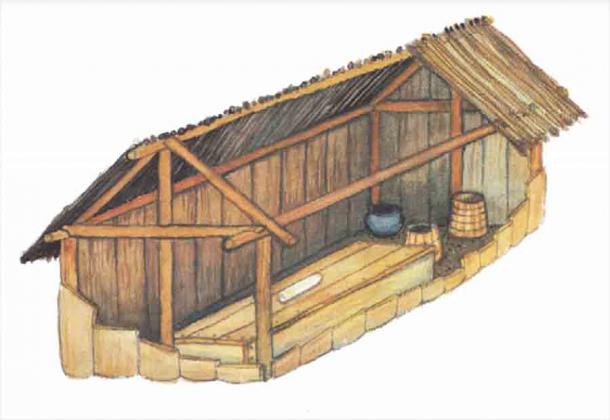
Reconstruction of the Bjerringhøj burial chamber where the collection of Viking bones originated. (Illustration by U. Seeberg / Antiquity Publications Ltd )
Viking Bones Found In An Elite High-Status Mound
The Bjerringhøj mound is located near the village of Mammen in Jutland and was first excavated in 1868 and it has since become regarded as the most important of all Danish Viking Age burials . The new research paper tells how “extreme diversity” was found in the 10th century grave, and that distinctions can be made between the burials of societal elites and the poor masses.
In one 10th century grave discovered in the mound was a Viking Age “Mammen style” iron axe with silver inlay, riding gear, and jewelry, that have all been associated with someone extremely rich and powerful in Viking society .
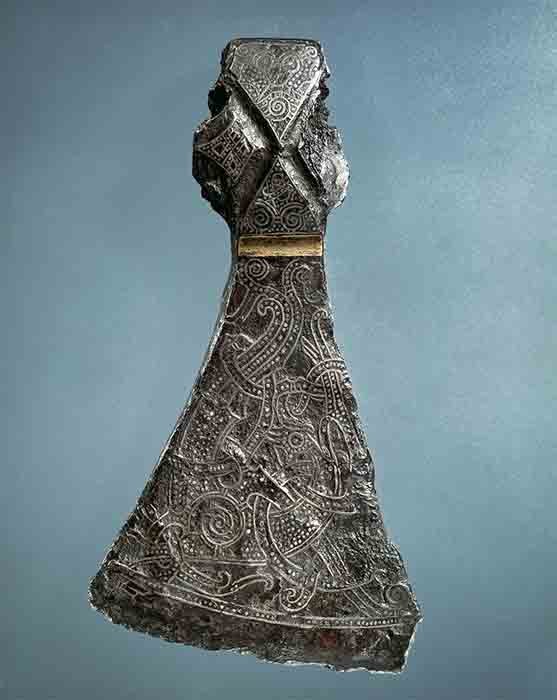
The exquisite ornate Viking axe found at Mammen ( National Museum of Denmark )
The paper goes so far as to suggest that the Viking bones discovered in the Bjerringhøj mound in the 19th century might have been “linked to the royal Jelling Dynasty .” This conclusion is further supported by the discovery of “silk, gold, silver and precious dyestuffs,” which all emphasize the unique and high status of the individual interred in this mysterious mound.
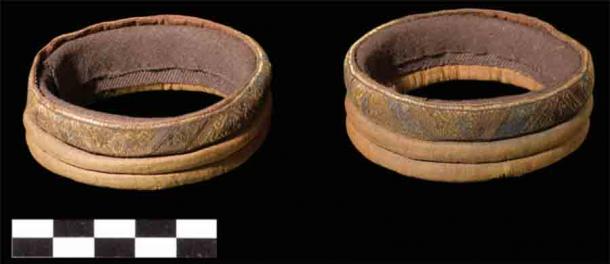
These woven cuffs from the Bjerringhøj mound, made from padded silk fabrics, are decorated with delicate, tablet-woven bands in silk, silver and gold threads (R. Fortuna, National Museum of Denmark / Antiquity Publications Ltd )
Ironing Out A Historical Boo-Boo
The team of researchers claim that sometime between the 1950s and 1984 someone at the National Museum of Denmark confused the Viking bones of the rich individual discovered at Bjerringhøj, with another archaeological collection known as “the Slotsbjergby.” The author of the new research argues that her new paper provides “a convincing case to support the argument that the human bones currently connected to Slotsbjergby actually derive from the Bjerringhøj burial.”
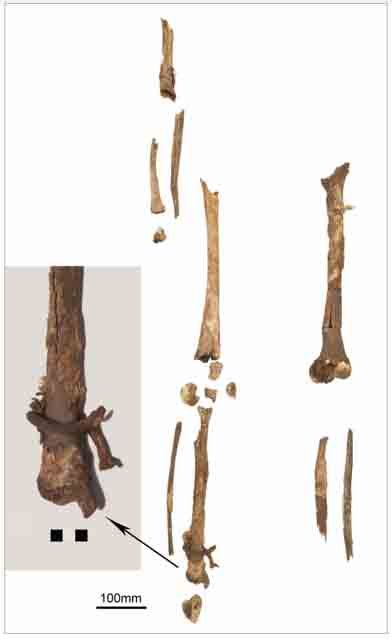
The collection of Viking bones in the Slotsbjergby box, with a closeup of the wool roll around the right tibia (R. Fortuna, National Museum of Denmark / Antiquity Publications Ltd )
Through new analyses of the bones, and a comparative re-analysis of the textiles, the team determined that the collection had indeed originated at the Bjerringhøj mound.
Furthermore, this idea is supported by new radiocarbon dating results from the collection of bones that are “compatible with the embroidered textiles ,” according to the new paper.
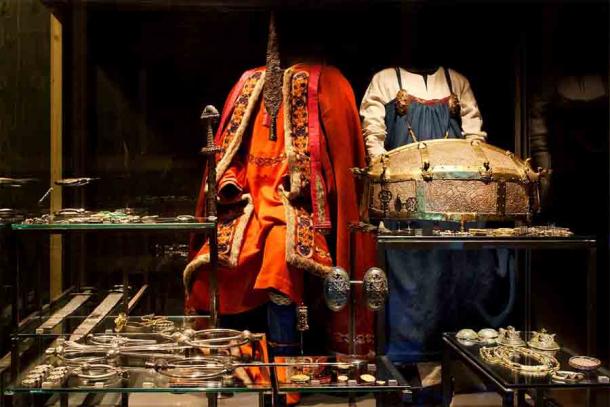
Reconstructions of two of the elite textile examples found in the Bjerringhøj mound. (Nationalmuseet – The National Museum of Denmark from Denmark / CC BY-SA 2.0 )
The Richest Textiles For Dead Elite Vikings
Besides using state of the art technologies to test the bones and textiles, considerable subjective evidence indicates that the collections had been confused in the 19th century. Not only did the bone inventory match the 1872 anthropological description, with only the enamel fragment missing, but the number and types of bones matched the numbers reported in the original Bjerringhøj archaeological report.
With this new data the researchers now know that the individual buried in the Bjerringhøj grave was an adult male whose “pronounced muscle-insertion sites imply frequent participation in intense physical activity, possibly connected to riding.”
The team of scientists also noted that the Bjerringhøj textiles “are notably different from the Slotsbjergby textiles.” The Bjerringhøj textiles were “embroidered fabrics that reached down below the knees,” designed to be draped over the top of a dead body.
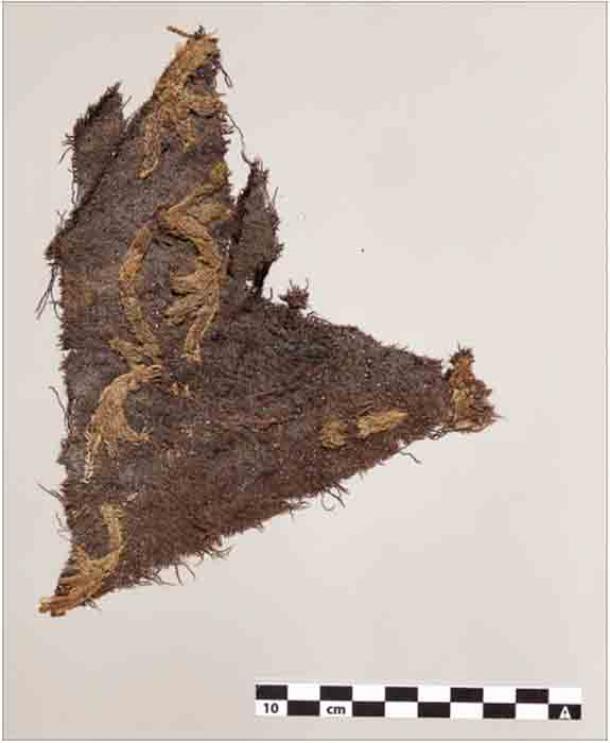
Detail of the embroidered wool textile (Fragment #7) from Bjerringhøj. (Photograph by R. Fortuna, National Museum of Denmark / Antiquity Publications Ltd )
Fresh Data Means Revamping Traditional Interpretations
The team of researchers have published a store house of new data pertaining to fabric and textile use in the Viking Age and among the most interesting observations is that the man had “openly woven rolls and a tablet-woven band.” These items, say the authors, represent components used for ankle cuffs which in turn imply the presence of a pair of “ long trousers .” This, in turn, further supports the suggestion that the mysterious individual was a man.
It should be noted that no actual traces were found of the ancient trousers themselves within the collection of Viking bones and textiles that were previously assumed to be associated with Slotsbjergby.
However, the researchers speculate that they would have been fashioned from “a plant-fibre textile, such as flax or hemp,” according to the paper. Again, such clothing associates the collection of bones and textiles with the high-status Bjerringhøj burial, and now, knowing the real origins of this collection, a whole new world of research has been opened for fabric, textile, and clothing trends in the Viking Age.
Top image: A Viking settlement as it would have looked when the Bjerringhøj burial mound was built, and the Viking bones of an elite individual were interred within. Source: Frankix / Adobe Stock
 RSS Feed
RSS Feed















 May 4th, 2021
May 4th, 2021  Awake Goy
Awake Goy  Posted in
Posted in  Tags:
Tags: 













